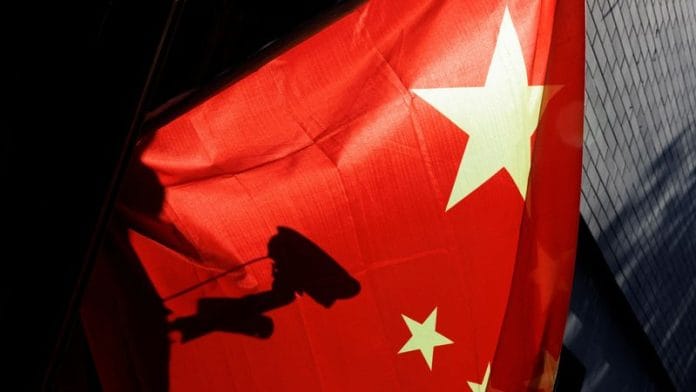India and China diverge significantly in their interpretations of the persisting border tensions, with no apparent signs of rapprochement. During a recent monthly press briefing, Wu Qian, China’s defence ministry spokesperson, asserted that “the boundary dispute is a legacy issue between China and India, but it does not represent the whole picture of bilateral relations.” He criticised India’s attempt to link the border situation with bilateral relations as “inappropriate”, calling New Delhi “unwise”. The Chinese narrative appears to diverge from the actual situation on the ground. A circulating video depicts Chinese soldiers intercepting Indian shepherds in the Kakjung area in Ladakh. This incident contradicts the reality as portrayed by the Chinese government.
This long-standing narrative, advocating for the separation of the border dispute from other aspects of the relationship, has been consistently promoted by China for decades. However, India has now chosen to prioritise the resolution of the differences, particularly since the 2020 Galwan clashes, making the boundary issue the most challenging and unresolved point of contention in the relationship.
Publicly acknowledging China’s unwillingness to resolve the differences, India has accused China of violating agreements and confidence-building measures. India’s minister of external affairs, S. Jaishankar has called the state of relations as ‘abnormal’. There is a prevailing sentiment that the dispute has transcended mere differences in perceptions of the Line of Actual Control (LAC). It is increasingly perceived that China aims to prolong the conflict for strategic advantages, applying pressure and keeping India preoccupied.
Also read: ‘India a major power’ says China’s Global Times op-ed, praises Modi govt’s ‘Bharat narrative’
China does not want to address India’s concerns
The dispute extends beyond territorial issues, focusing on broader objectives that China seeks to achieve. Historically, China has viewed India as inferior, primarily due to economic and military disparities, often considering it a pawn in the larger China-United States rivalry. The growing prominence of India presents a challenge for China, necessitating a recalibration of power dynamics. In this context, the escalation of tensions in the boundary dispute serves as a strategic tool for China to divert India’s attention and resources.
Following the Galwan clashes, China’s stance towards India has undergone a significant shift, sharply differing from its approach after the Doklam standoff in June-August 2017. When India joined the revived Quad later that year, China extended a temporary olive branch, resulting in two informal summits between Prime Minister Narendra Modi and President Xi Jinping. However, post-Galwan, there is no evident sign of such diplomatic gestures. This change can also be attributed to India’s persistent insistence on a meaningful resolution to the issue and its unwillingness to resume high-level dialogue without tangible progress on this front.
The perspectives on India within the Chinese media and scholarly community exhibit a wide spectrum, ranging from derogatory views to expressions of admiration. A specific analysis characterises India as merely mirroring China’s Cold War stance, suggesting an excessive self-assurance regarding its role in shaping geopolitical dynamics. A prevalent misconception among some Chinese commentators is the belief that the US is fostering a closer relationship with India solely as a countermeasure against China, overlooking the continually evolving and dynamic nature of India-US relations.
In stark contrast to these viewpoints, Zhang Jiadong from Fudan University describes India as “assertive, transformed, and stronger”. He argues that India’s strategic thinking in foreign policy is unmistakably shifting towards a great power strategy. Interestingly, these sentiments find resonance among some members of the ruling party in India.
On Weibo, prevalent sentiments towards India are largely negative. However, a significant portion of this negativity is linked to India’s strict scrutiny of Chinese investments flowing into the country. Notably, one influential account misrepresented Jaishankar’s calls for resolution and avoidance of differences as a strategy to scrutinise Chinese investments in India, purportedly to secure concessions in the ongoing dispute. Certain users exaggerated the inadequacy of infrastructure as a hindrance to India’s ambitions of supplanting China as the world’s manufacturing hub.
Amid heightened rhetoric, some argue that India is amplifying the perceived China threat through media, presenting China as an “imaginary enemy” and strategically utilising its participation in the Indo-Pacific strategy to enhance its competitive standing.
Also read: China has changed the equation for India’s neighbours. New Delhi can’t neglect them anymore
India’s China Policy remains consistent
This prompts us to consider whether the Indian government misinterpreted China or inflated the threat posed by China. The response is negative. China has intentionally exploited the existing differences and perpetuated them for strategic advantages. Consequently, India-China relations remain in a persistent state of fragility, marked by extensive military build-up and recurring standoffs.
India’s goal is to maintain manageable relations with China without compromising its territorial integrity and sovereignty. This policy stance has remained consistent since at least 2020. Despite the strained relations, marked as the lowest since the 1970s, India has not terminated military dialogue, and the Ministry of External Affairs (MEA) remains actively engaged. However, the highest leadership from both countries has not convened in a bilateral summit since 2019. Conspicuously, Xi also chose to abstain from attending the G20 summit held in New Delhi in September last year.
China is not just misconstruing India’s intentions; it is making a strategic error by turning a historically friendly relationship into an adversarial one, thereby deepening the existing trust gap. China needs to move away from viewing India solely through the lens of its ties with the US and recognise that New Delhi has the autonomy to pursue its own interests, as it has consistently demonstrated by safeguarding its national interests and territorial sovereignty. Normalising ties demands that China immediately halt the escalation of its military presence along the LAC, genuinely comprehend India’s concerns, and actively engage in resolving existing differences. The current lack of genuine efforts from Beijing only serves to prolong this tense period in India-China relations.
Sana Hashmi, PhD, is a fellow at the Taiwan-Asia Exchange Foundation and George HW Bush Foundation for US-China Relations. She tweets @sanahashmi1. Views are personal.
(Edited by Prashant)






